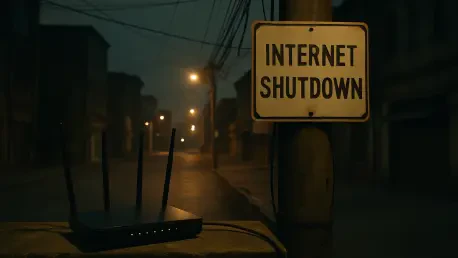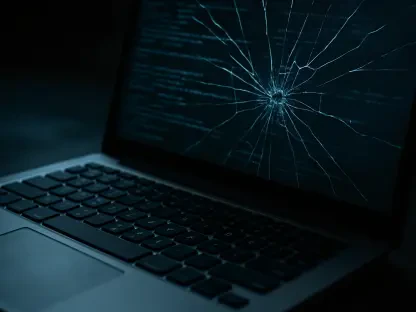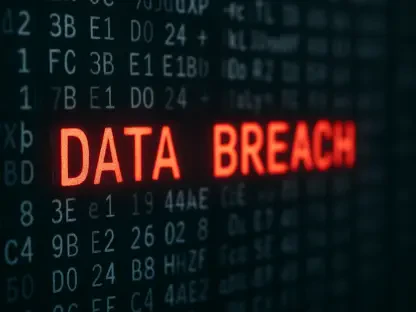On October 29th, during Tanzania’s national election, the country plunged into a digital abyss with a five-day internet blackout that silenced millions, severing communication and access to information at a pivotal moment. As votes were cast for a new president, internet traffic plummeted to near-zero levels, leaving citizens grappling with uncertainty, unable to share updates or verify election developments. This stark move by the Tanzanian government highlights a disturbing trend in the digital age: internet shutdowns are increasingly wielded as a tool for political control. This analysis delves into Tanzania’s case as a focal point, alongside global examples, to unpack the rising pattern of digital suppression, its far-reaching implications, and what lies ahead in the battle for online freedom.
The Surge of Internet Shutdowns for Political Leverage
Mapping the Worldwide Pattern
The frequency of internet shutdowns tied to political events has surged dramatically in recent years, reflecting a calculated strategy by governments to curb dissent. Reports from organizations like NetBlocks and Cloudflare reveal a sharp increase in government-orchestrated outages, especially during elections and protests. From 2025 onward, data indicates that over 50 countries have imposed such restrictions annually, with regions like Sub-Saharan Africa and South Asia leading in frequency. These shutdowns often coincide with critical moments of political tension, designed to stifle information flow and opposition coordination.
Beyond raw numbers, the scope of these disruptions has widened, affecting not just urban centers but also remote areas reliant on digital connectivity for basic communication. The economic toll is staggering, with billions in losses attributed to halted online transactions and disrupted services. This trend underscores a growing reliance on internet control as a mechanism to maintain power, raising alarms about the erosion of digital rights across the globe.
Concrete Examples of Digital Domination
Tanzania’s internet blackout, initiated on October 29th during its national election, stands as a glaring instance of this tactic. For five days, NetBlocks and Cloudflare’s Radar service recorded near-zero internet traffic, a direct result of government intervention that crippled communication as President Samia Suluhu Hassan secured re-election. Amid this, opposition candidates were barred from running, and civil servants were oddly instructed to work from home without means to connect online, only for services to resume just in time for the online broadcast of the swearing-in ceremony at a military facility.
Globally, similar patterns emerge with distinct forms of repression. In Afghanistan, the Taliban enforced a sweeping telecom ban to choke information during political transitions. China, in a striking move, severed itself from the global internet for an hour, showcasing absolute control over digital borders. Iran faced hours-long outages, justified by vague claims of “enemy abuse,” while in Pakistan, a politician resorted to deepfake technology to deliver a speech from prison, bypassing censorship. These cases illustrate a shared intent among regimes to manipulate digital access as a political weapon.
Ground-Level Perspectives: Insights on Oppression and Defiance
Expert voices shed light on the dual dynamics of repression and resistance in contexts like Tanzania. Dan Paget, an assistant professor at the University of Sussex, labels the actions of President Hassan as “unprecedented” in their severity. He points to the trial of her main rival, Tundu Lissu, for treason, alongside the exclusion of other candidates, as evidence of systemic suppression. During the election period, the government’s response to dissent was brutal, with reports of arrests, violence, and at least 500 deaths linked to protests against the blackout and electoral irregularities.
Yet, Paget also identifies a countercurrent of hope within this bleak landscape. He argues that protests during this period have carved out temporary spaces of emancipation, where citizens defied the regime by actions such as seizing ballot boxes and openly criticizing authorities. These acts of resistance, though met with harsh repercussions, signal a shift in Tanzania’s political fabric, suggesting that the populace is no longer entirely subdued by digital and physical crackdowns.
The interplay between control and pushback, as Paget describes, reveals a complex struggle. While the state wields internet shutdowns to mute opposition, the very act of protesting—despite risks—demonstrates a growing resolve among citizens to reclaim their voice. This tension highlights the dual nature of internet control as both a tool of oppression and a catalyst for grassroots defiance.
Future Horizons: The Trajectory of Internet Suppression
Looking forward, internet shutdowns are likely to evolve as a political strategy, shaped by technological advancements and counter-strategies from activists. Governments may leverage sophisticated tools like AI-driven censorship or targeted network disruptions to refine their control, minimizing global backlash while maximizing domestic impact. Conversely, activists are exploring decentralized networks and encrypted platforms to bypass restrictions, potentially undermining state efforts to monopolize information.
The implications of this trend are profound, with a clear risk of deepening democratic erosion if shutdowns become normalized. Without intervention, digital suppression could entrench autocratic power, limiting transparency and accountability during critical political moments. However, there is also potential for stronger international pushback, with organizations and coalitions advocating for sanctions or policies to protect internet access as a fundamental right, drawing from emerging resistance in places like Tanzania.
Balancing these outcomes, the trajectory of internet control hinges on global awareness and local resilience. The persistence of protest movements in Tanzania offers a glimpse of hope, suggesting that sustained pressure from below could challenge repressive tactics. Yet, the risk of normalized digital blackouts looms large, demanding vigilance to prevent a future where access to information is routinely weaponized.
Final Reflections: Navigating Control and Counteraction
Reflecting on this global trend, Tanzania’s five-day internet shutdown during its national election stands as a stark emblem of how digital tools are manipulated for political ends. The harrowing toll, including widespread violence and loss of life, paints a grim picture of repression, yet the sparks of protest hint at a burgeoning resistance. Across the world, parallel instances of internet control echo a shared strategy among regimes to silence dissent and shape narratives.
Moving forward, actionable steps emerge as critical to counter this trend. International advocacy for digital rights needs to intensify, pushing for frameworks that penalize shutdowns as violations of human rights. At the local level, supporting technological innovations like mesh networks offers a practical way to sustain connectivity during blackouts. Ultimately, safeguarding internet access demands a collective commitment to monitor, resist, and innovate against tactics that threaten democratic freedoms, ensuring that the digital realm remains a space for empowerment rather than control.









